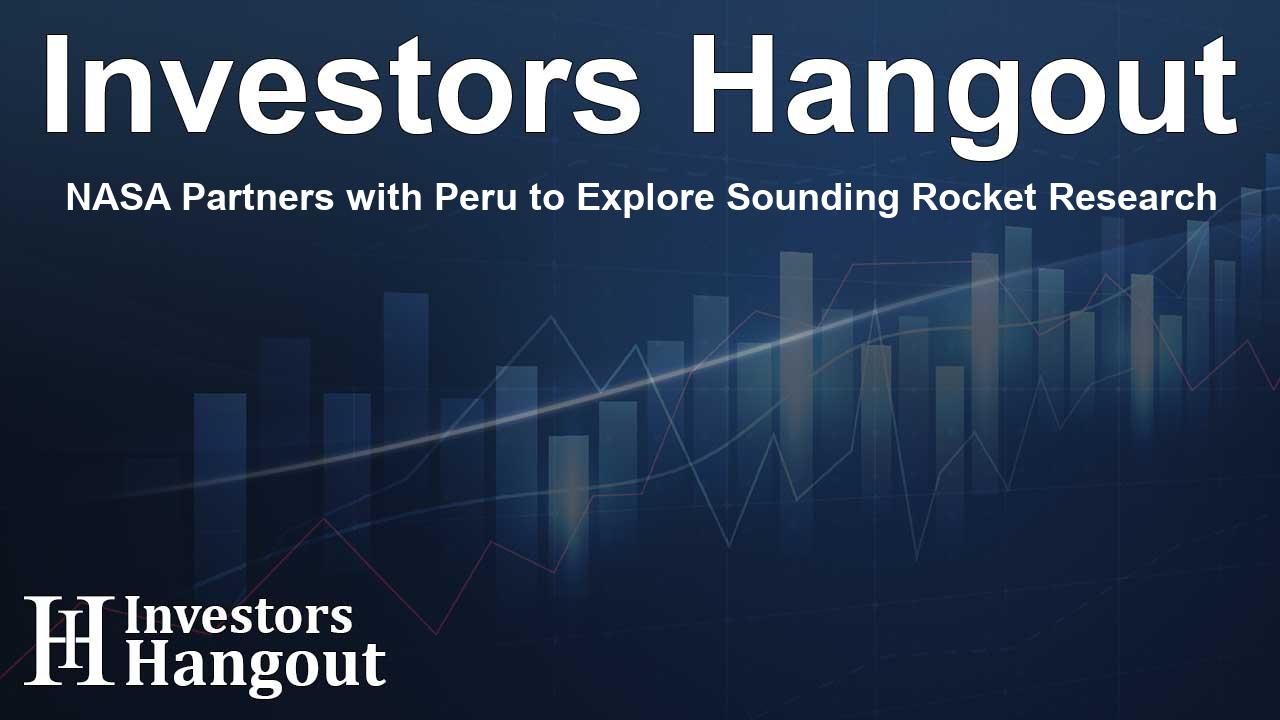NASA Partners with Peru to Explore Sounding Rocket Research

NASA and Peru's Groundbreaking Partnership
NASA and Peru's National Commission for Aerospace Research and Development (CONIDA) have embarked on an exciting journey to explore the potential for a scientific rocket launch campaign in Peru. This collaborative effort signifies a notable advancement in international space research and partnerships.
Understanding the Agreement
Recently, both nations formalized their dedication to this initiative by signing a non-binding memorandum of understanding. This agreement aims to establish a framework for safety training, a comprehensive feasibility study for the campaign, and technical support for CONIDA regarding the operation of sounding rocket launches.
What Are Sounding Rockets?
Sounding rockets are small, cost-effective vehicles designed for suborbital flights. They allow researchers to access space for a brief duration, gathering essential data that contributes to our understanding of various atmospheric phenomena. This method holds significant promise for scientific exploration, especially given Peru's advantageous geographic location along the magnetic equator.
Highlights from the Signing Event
During the signing ceremony, NASA Administrator Bill Nelson expressed enthusiasm about re-engaging with sounding rocket launches from Peru. He stated that this partnership would deepen the international collaboration aimed at scientific research, particularly highlighting Peru's unique geographic advantages.
Maj. Gen. Roberto Melgar Sheen, head of CONIDA, represented Peru alongside various officials, including Brian Nichols, the assistant secretary for Western Hemisphere Affairs, and Stephanie Syptak-Ramnath, the U.S. ambassador to Peru. This high-profile event coincided with the Asia-Pacific Economic Cooperation forum held in Lima.
Notable Achievements in Space Cooperation
The collaboration between the United States and Peru dates back to significant projects in the past, including sounding rocket campaigns conducted by NASA at CONIDA's Punta Lobos launch site. These previous endeavors, first undertaken in 1975 and revisited in 1983, paved the way for the present agreement, reinforcing a strong foundation of cooperation in space exploration.
The Scientific Objectives Behind Sounding Rocket launches
NASA's sounding rockets play a crucial role in advancing our scientific knowledge and capabilities. By carrying scientific instruments, these rockets can reach suborbital altitudes to gather valuable data. This data helps researchers analyze Earth's atmosphere, solar influences, and various cosmic phenomena.
Protecting Our Planet's Resources
Understanding the interactions between our atmosphere and solar activity is crucial. This knowledge assists in protecting our vital ground-based and space-based assets, including electrical grids, weather forecasting systems, and navigation technologies. The data derived from these missions can lead to advancements that enhance the safety and efficacy of our technological systems.
Looking to the Future of Space Research
This agreement between NASA and CONIDA reflects a commitment to future scientific endeavors and mutual support in advancing space exploration. The unique geographical attributes of Peru make it an ideal location for conducting rocket launches and scientific research, fostering opportunities for impactful discoveries.
For more information about NASA's international partnerships, organizations and individuals are encouraged to explore the programs and resources available on NASA’s official channels.
Frequently Asked Questions
What is the purpose of the NASA and Peru partnership?
The partnership focuses on establishing a scientific rocket launch campaign to enhance research capabilities and international collaboration.
What are sounding rockets?
Sounding rockets are small, suborbital vehicles used to carry scientific instruments into space for data collection.
Who represented the U.S. at the signing event?
Nasa Administrator Bill Nelson and other U.S. officials represented the United States at the event.
What historical context does this partnership have?
This partnership builds upon previous successful collaborations between NASA and Peru in the 1970s and 1980s involving sounding rocket campaigns.
Why is Peru's geographic location significant for space research?
Peru's location along the magnetic equator offers unique advantages for scientific research, particularly in studying atmospheric and solar interactions.
About Investors Hangout
Investors Hangout is a leading online stock forum for financial discussion and learning, offering a wide range of free tools and resources. It draws in traders of all levels, who exchange market knowledge, investigate trading tactics, and keep an eye on industry developments in real time. Featuring financial articles, stock message boards, quotes, charts, company profiles, and live news updates. Through cooperative learning and a wealth of informational resources, it helps users from novices creating their first portfolios to experts honing their techniques. Join Investors Hangout today: https://investorshangout.com/
Disclaimer: The content of this article is solely for general informational purposes only; it does not represent legal, financial, or investment advice. Investors Hangout does not offer financial advice; the author is not a licensed financial advisor. Consult a qualified advisor before making any financial or investment decisions based on this article. The author's interpretation of publicly available data shapes the opinions presented here; as a result, they should not be taken as advice to purchase, sell, or hold any securities mentioned or any other investments. The author does not guarantee the accuracy, completeness, or timeliness of any material, providing it "as is." Information and market conditions may change; past performance is not indicative of future outcomes. If any of the material offered here is inaccurate, please contact us for corrections.